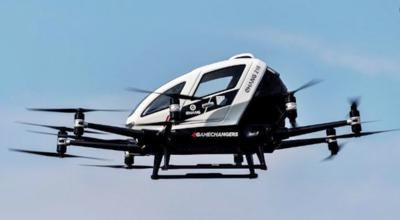Tue, Jan 31, 2023
Shifting Regulatory Landscape Expected as Industry Digests Rapid Advancement
Just before the end of 2022, the EASA published its rulemaking plans for Uncrewed Aircraft Systems and vertical take-off and landing aircraft (VTOL) use.

Worldwide legal operation Reed Smith has published a brief on the subject, pointing out some classifications and changes.
"EASA operational rules for UAS are separated into three categories based on factors including the level of risk posed by a proposed flight: low, medium, and high-risk," their initial brief states. "Currently, EASA has regulations for low and medium-risk UAS operations (“open” and “specific” categories, respectively). The document published by EASA in December 2022 provides clarification relating to high-risk UAS operations (“certified” category) and Urban Air Mobility (UAM), among other activities. EASA regulations for these more advanced operations are ongoing, in line with the regulatory development in many other countries like the U.S."
So what's on deck for the change? EASA plans to propose amendments to existing regulations to allow for what Reed refers to as "high-risk UAS and AAM operations." Those opinions have yet to be released by the EASA, but are expected to cover the expected run of uncrewed aircraft ops seeing advances lately. Operations like the uncrewed aerial carriage of cargo or takeoff and landing at aerodromes (soon to be vertiports) are the first that come to mind. Additional operations with single pilot operations, like sustainable air taxi flights, urban UAS operations, and such are also expected to be broken down in future publications.
Reed's summary advises clientele to watch out for an ever-shifting regulatory landscape as the legal ramifications of rapid change make their way through the system. "In its document, EASA notes the complexity of the regulatory architecture needed to permit high-risk UAS operations and UAM. EASA’s planned consultative process for the tasks above is iterative and may result in additional proposals to introduce or amend existing rules"
More News
From 2023 (YouTube Edition): "Ain’t Your Daddy’s Super Cub”—Don Wade Co-owned by Don and Ron Wade—the former of Don’s Dream Machines, a storied >[...]
Pilot-Rated Passenger Reported That The Pilot Did Not Adequately “Round Out” The Landing Flare And The Airplane Bounced And Yawed To The Right Analysis: The pilot state>[...]
Dead Reckoning Dead reckoning, as applied to flying, is the navigation of an airplane solely by means of computations based on airspeed, course, heading, wind direction, and speed,>[...]
Aero Linx: Lake Amphibian Club This website is created and sponsored by the Lake Amphibian Club, to help spread the word about these wonderful, versatile amphibians that can land j>[...]
“I am deeply honored to be sworn in as NASA administrator. NASA’s mission is as imperative and urgent as ever — to push the boundaries of human exploration, ignit>[...]
 Classic Aero-TV: In Praise of Alabamas Patriot Aircraft USA
Classic Aero-TV: In Praise of Alabamas Patriot Aircraft USA NTSB Final Report: Cirrus Design Corp SR22
NTSB Final Report: Cirrus Design Corp SR22 ANN's Daily Aero-Term (12.21.25): Dead Reckoning
ANN's Daily Aero-Term (12.21.25): Dead Reckoning ANN's Daily Aero-Linx (12.21.25)
ANN's Daily Aero-Linx (12.21.25) Aero-News: Quote of the Day (12.21.25)
Aero-News: Quote of the Day (12.21.25)



